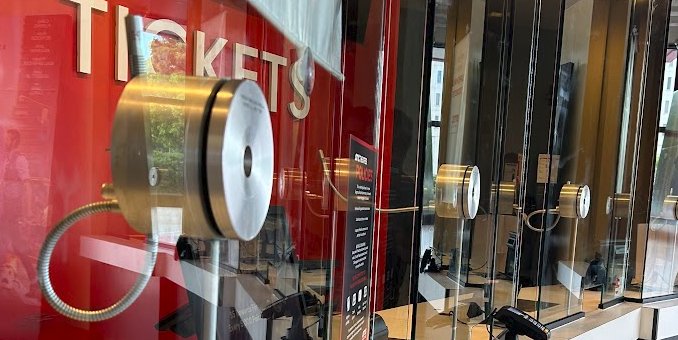
There are any ways to measure success and failure in Hollywood. For some it’s working hard enough to get one or more coveted award or statuette on one’s mantle. For others it’s just getting to work enough to be able support themselves and perhaps a family while others are just happy for the opportunity to express themselves creatively while earning an income doing so.
One of the most widely recognized yardsticks of success used by the movie industry is a film’s box office. The number of tickets a film sells during its theatrical release can vastly influence, both positively and negatively, the paycheck an actor, director or screenwriter can command for their next project. Studios love the bragging rights a string of box office hits brings just as much as they cringe when a succession of flops draws the scrutiny of stockholders and the industry press.
And in the moment, a film’s box office haul is indeed an indicator of its financial success. (Measuring a film’s artistic success is a conversation for another day.) But that is really all it is good for measuring, that particular moment. Trying to move outside of that particular moment with a box office total through by adjusting for inflation does nothing except render that figure meaningless.
Intangibles
As anyone who has watched box office returns over time – be they journalists or studio executives – can tell you, there are a number of factors that affect overall theatrical revenue in both the micro and macro views. These can be categorized into five specific factors, which are in roughly ascending order –
- Regional inclement weather can shut down theaters across a section of the country suppressing a weekend’s overall. A blizzard along the East Coast in January 2016 is attributed to that weekend’s box office earnings being 30% less than predicted.
- Economic factors will understandably play a big part in the public’s movie going habits. While during the Great Depression movie going was seen as a form of escape from the public’s daily woes and concerns, more recent economic downturns have seen people cutting back on discretionary spending, with movie going falling firmly into that category.
- Technological advances have very notably affected movie theater attendance throughout the entire history of the medium. The 1950s boom in the popularity of television – entertainment you could get for free without leaving your home – brought about a precipitous drop in motion picture attendance. In order to lure ticket buyers back to theaters, the studios looked began developing new cinema technology. Widescreen, developing stereo sound, the (first) brief 3D boom and the shift to color from black and white for all films were all part of that push. And that arms race between television and theaters continues through to this day as multiplexes have to work to draw customers in and away from home theater systems and internet streaming options.
- The zeitgeist of popular culture often moves in mysterious ways. There is no sure way of predicting what movie will spark the public’s imagination. In the 1970s, the country was in something of a malaise brought upon by the Vietnam War, Watergate, the gas crisis and a host of other issues. Much of the cinematic offerings available at the local movie theater reflected that downturn of the national mood. And then an upbeat, throwback film espousing a simple “good guys will triumph over bad guys” philosophy called Star Wars premiered in the summer of 1977 and would go on to totally change the film industry. Interest in genres is often cyclical; it explodes and then implodes over the course of years all the time. Westerns and musicals both had their dominance at the box office, but now hardly anyone works in them.
- Finally, there are some wildcards in cinema’s history that changed things up in such a profound, impactful way. The most recent example of this is undoubtedly the COVID lockdowns of 2020-2021, which substantially rewired people’s brains in relation to theatrical moviegoing and waiting to see things on streaming. Technological and economic factors were also in play here, but the shift to streaming was certainly accelerated by the COVID lockdowns.
As you can see, all of these factors are not necessarily independent of each other. Instead, they form a complex system that consciously and unconsciously impacts the ticket-buying public and their spending habits in relation to their movie-going.
The most important thing to note about these five factors is that they can not be quantified in the same way that box office receipts can be. You can’t use all of the contextual things surrounding any singular film’s box office gross to help calculate how a film released on a specific weekend in June 2013 would compare financially to a film released this past summer. There is no graduated index to gauge how strong or weak public sentiment is towards a specific genre or filmmaker. It is more of a vibe than a measurable statistic. As such, those changes can not and should not be factored into box office comparisons over time. The same goes for external pressures such as the economy and even the weather. Their impacts on the box office can be observed – By those who wish to observe them, that is – but can’t be measured in a specific way that becomes useful in long-term analysis.
Thus, the fallacy of using inflation adjustment comes down to one simple thing – Box office gross is a single adjusted data-point, stripped of all original context that factor in the broader circumstances driving that film’s theatrical fortunes.
Let’s look at an example.
A Tale Of Two Films
Recently, a group of people had a beef to grind with a movie featuring a new iteration of a pop culture character. They strongly wished for more of the last iteration of that character and his exploits, even though the public, the studio and even the actor and director of that previous version had all moved on. (I think we all know who we’re talking about here. I’m just going to leave them unnamed lest some form of Beetlejuice-ian incantation accidentally summons them.)
When it became apparent that their calls for a boycott of the new film were going unheeded – If indeed anyone outside of a small social media bubble even heard them to begin with – they began to change their tactics. As the film began to do good business at the box office, they started to claim that this film still wouldn’t beat their older film’s box office total when adjusted for twelve years’ worth of inflation from when it was originally released. And yes, that adjusted box office figure for the older film was higher by about fifteen per cent. However, that adjustment does not consider a number of contextual and environmental impacts that may have helped to goose the older film’s box office numbers in relation to the theatrical environment that the newer film found itself in.

In the case of the older film, it was released at a time of growth of interest and box office for all films in its main genre. One of the named producers on the film was the director of a very popular, just concluded trilogy of films in that same genre, which generated good will and some interest in the then-new 2013 film. To be fair, theater attendance had been pretty flat for the previous several years, with annual domestic box office takes for 2010 through 2013 all in the $10.5 to $10.9 range annually, so it did do fairly well in that environment. But it still was only the second highest grossing film in its genre that year.
Now the theatrical exhibition environment into which the new film was released this summer is remarkably different from the one thirteen years previously. Most notably, thanks to the COIVD epidemic, more people had shifted their viewing habits to streaming. The idea of waiting a few extra weeks or months to see a new release at home as oppressed to going out to a theater has taken a grip on the public. That shift can be simply demonstrated by looking at and comparing the overall box office before and after COVID. In the five years (2015-2019) leading up to the COVID lock down, 27 films broke the $1 billion barrier at the world wide box office. Nine of those were in 2019 alone. However, in the post-COVID era (2021-2025) only ten movies have reached a similar financial milestone.
Additionally, The public’s appetite for films in this specific genre seems to have waned somewhat. Box office for films in this particular genre have been down, although part of that could just be attributed to the general post-COVID theater attendance downturn we’ve already noted. Furthermore, the brand within the genre that these two films had become notably tarnished in the intervening decade and a half between the two film’s releases due mostly in part to poor studio management and poor movie making early on in this time frame.
As shown, both films were released in vastly different theatrical environments that had impact on their box office take. The older film was certainly a beneficiary of a more inviting zeitgeist which certainly gave it a boost at the box office. Meanwhile, the newer film was battling the headwinds of a poor public perception in trying to get people into theaters and managed to earn roughly the same amount.
So which was more successful?
In terms of financial success, I would argue that the more recent film is, based on the larger obstacles it had to overcome. For it to do roughly the same business while sailing into headwinds that the older film did with the wind in its sails, is certainly an achievement.




